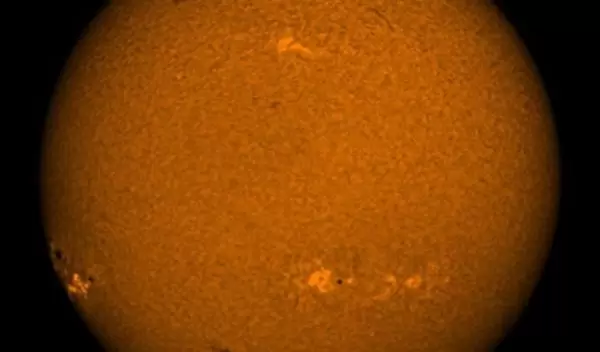
National Solar Observatory predicts a large sunspot for Thanksgiving
Scientists at the U.S National Science Foundation National Solar Observatory have predicted the emergence of a new sunspot group just in time for Thanksgiving.
Using a technique called helioseismology, the team has been "listening" to changing sound waves from the sun's interior. Recent changes in these sound waves point to the imminent appearance of a new sunspot group, which can now be seen from Earth near the eastern solar limb.
"We measured a change in acoustic signals on the far side of the sun," says Alexei Pevtsov, associate director of NSO's Integrated Synoptic Program. "We can use this technique to identify what is happening on the side of the sun that faces away from Earth days before we can catch a glimpse from here. Having up to five days' lead time on the presence of active sunspots is extremely valuable in our technology-heavy society."
Solar storms often originate in sunspot regions, especially if the sunspot is large and complicated. The more tangled the magnetic field, the more likely it will result in large solar flares and coronal mass ejections, which, in turn, can result in space weather effects on Earth.
These include impacts on communications, GPS and possibly electrical grid systems. NSO provides 24/7 "eyes on the sun" through the Global Oscillation Network Group, GONG, which is funded by NSF and the National Oceanic and Atmospheric Administration. The network consists of six monitoring stations positioned across the globe, observing the sun's magnetic field and other features all day every day.
"The ability of GONG to identify and track active regions on the far side of the sun has important implications for future space weather predictive capabilities," says Carrie Black, a program director in NSF's Division of Astronomical Sciences. "GONG continues to be a valuable tool for both fundamental science research and operations."


